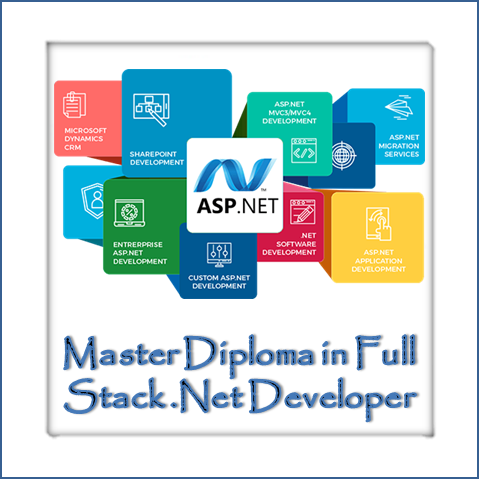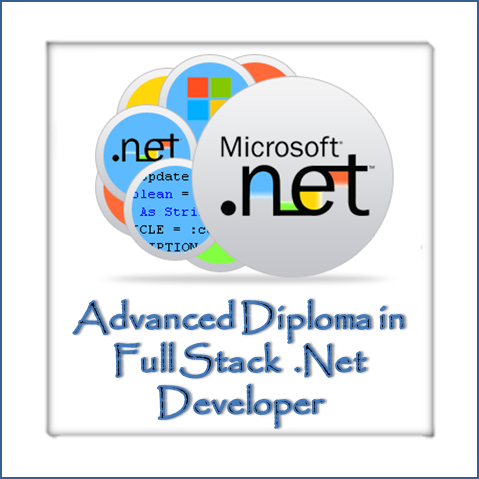Job Oriented Dot Net Training Institute in Pune
About Profound Edutech Dot Net Course in Pune?
.NET Core has got remarkable attention in recent years and is becoming increasing popularity day by day as well as moving very fast. .NET Core is a general-purpose development platform maintained by Microsoft and the .NET community on GitHub. It is an open-source, cross-platform (supporting Windows, macOS, and Linux operating systems.) and can be used to build device, cloud, and IoT applications. Runs your code with the same behavior on multiple architectures. Includes easy-to-use command-line tools that can be used for local development and in continuous-integration scenarios..NET Core 1.0 was released on 27 June 2016.
.NET Core is written from scratch to make it modular, lightweight, fast, and cross-platform Framework. The .NET Core application speed up the performance, reduce the memory footprint and becomes easy to maintain. As it includes the core features that are required to run a basic .NET Core app. Other features are provided as NuGet packages, which user can add it in the application as needed.
Various Job Oriented Diploma Courses offered in .Net are :
1. Master Diploma in Full Stack .Net Developer
2. Advanced Diploma in Full Stack .Net Developer
Various Dot Net Courses offered by Profound Edutech

# Duration is 6 mth (4 hrs daily)
# Covers entire syllabus of Advanced Diploma and additional topics like Software Testing, ExpressJS, NodeJS, MongoDB, Python, etc.
# Softskills & Aptitude
# Internship on Live Projects
# Internship letter
# Priority Placements

# Duration is 4 mth (4 hrs daily)
# Covers entire syllabus of Diploma and additional topics like MVC, WCF, WPF, HTML5, CSS3, Bootstrap, JavaScript, Angular/ReactJS, etc.
# Softskills & Aptitude
# Project Incubation
# 100% Placement Support

- Introduction to OS & Networking
- Overview of Operating System
- Concept of Process and Thread
- Memory Management
- Network Basics
- Classification of Networks
- Network Topologies
- Network Communication and Protocols
- TCP/IP fundamentals
- Database Fundamentals & SQL
- Introduction to Database
- Normalization
- Introduction to SQL statement
- Built-in functions
- Summarizing results using group functions
- Joins
- Retrieving Data by using Sub-queries
- SET operators
- Manipulating data and transaction
- Managing other schema objects
- Managing objects with Data Dictionary Views
- Manipulating large DataSet
- Managing Data in Different Time Zones
- Introduction to PL/SQL
- C Programming
- Introduction to Programming
- Data Types, Operators
- Compilation, Linking, Execution, Debugging
- Integrated Development Environment
- Console Input and Output
- Control Structures
- Functions
- Pointers
- Storage classes, Dynamic Memory allocation
- Arrays, Strings
- File IO
- Structures and Unions
- Command Line arguments
- Macros
- Obeject Oriented Programming Concepts
- What is OOP's
- Why we need OOP's
- What is Object?
- Object Charactristics
- Concept of Classes & Object creation
- NET Applications & Tools
- .Net Standards
- Core C#
- OOPs Major Pillars
- Language Basics
- Classes, Records, Structs & Tuples
- Exception Handling
- Events, Delegates & Lambdas
- Collections
- Language Integrated Query
- File IO and Serialization
- Reflection, Metadata
- Dependency Injection
- Managed and Unmanaged Memory
- Threading and Tasks and Asynchronous Programming
- Entity Framework Core
- Understanding Web Technologies
- Introduction of ASP.Net Core
- Understanding ASP .Net Core Project Structure
- Understanding Static Files
- Writing Custom Middleware
- State Management
- Working with Razor Pages and Rzor Component
- HTML Helper classes
- MVC in ASP.Net Core
- Data Handling in .Net Core using LINQ
- Data Handling in .Net Core using EF Core
- Security
- Call WEB API
- Globalization & Localization
- Unit Testing
- Deployment
- Introduction & Architecture
- Methods in API – Postman
- Working with Data and ODATA
- CRUD operations in API
- Routing & Configurating
- HTML 5
- HTML Basics: Structure, Elements and Attributes
- Various Input fields in html
- Tables, Frames, Lists, Layouts
- Fonts, Colors
- Images
- HTML Forms
- CSS 3
- Styling with CSS
- Selectors and style definitions
- Properties of CSS
- Linking HTML & CSS
- Limitations of normal selectors
- Types of selectors
- CSS Properties
- CSS pseudo elements
- CSS Animation
- Introduction to Bootstrap
- Bootstrap Grid
- apply Bootstrap Grid
- Bootstrap Typography
- Bootstrap Tables
- Bootstrap Button
- display images
- display text
- Bootstrap Components
- What is Bootstrap Components
- Glyphicons Component
- Dropdown Menu Component
- Button Groups and Button Toolbar
- Navigation Pills & Tabs Components
- Navbar Component& Responsive Navbar
- Forms
- Pagination Component
- Labels / Badge Components
- Jumbotron
- Alerts & Dismissible Alerts
- Progress Bar
- Media Objects Component
- List Group Component
- Panel Component
- Bootstrap Plug-Ins
- Modal
- Collapse
- Tool Tip
- Carousel Dropdown
- Java Script Language basics
- Variables, Data Types, Functions, Operators
- Control flow using conditional and Iterative statements
- Managing HTML DOM and Events
- OOPs in Java Script
- Typescript as Programming Language for Angular
- Trans compilation, Debugging Typescript code
- Classes & Interfaces
- Control Structures
- Functions & types
- Decorators
- Rest & Spread Operators
- What is React?
- React Features
- Component Based Architecture
- Life Cycle of a Components
- State & Props in React
- Working with JSX
- Using bootstrap in React App
- React Hooks
- React Forms, Formik
- Routing in React
- JSON with React
- React CRUD operations
- Testing
- What is Angular?
- Single Page Application vs Server-side Web Applications
- Why Angular and Angular features
- Angular Installation & architecture
- Introduction to Components
- What Is a Component?
- Creating the Component Class
- Component hierarchy and wireframing
- Essential built-in directives
- Using @Input and Data from a Component Using @Output
- Templates, Interpolation, and Directives
- Building a Template & Component
- Using a Component as a Directive
- Angular Directives
- Directives Overview
- Data Binding and Pipes
- Property Binding
- Class and style bindings
- Handling Events with Event Binding
- Input with Two-way Binding
- Transforming Data with Pipes
- Built-in Pipes, Chaining Pipes
- Types of Pipe
- Custom Pipe
- Services and Dependency Injection
- Dependency injection
- Creating Services
- CRUD operations using services
- Retrieving Data Using HTTP
- Observables and Reactive Extensions
- HTTP Basics & operations
- CRUD operations with HTTP
- Navigation and Routing Basics
- Configuring the Routes
- Route parameters
- Tying Routes to Actions
- Placing the Views
- Passing Parameters to a Route
- Protecting Routes with Guards
- Modules
- What Is an Angular Module?
- Bootstrap Array, Declarations
- Array, Imports Array, Exports Array
- Providers Array
- Feature Modules, Shared Module
- Angular Forms
- Forms & its types
- Form Validation
- Custom Validation
- Data Binding in Angular Forms
- HTTP Form Posting and Data Access
- Angular Testing
- Angular & Unit Testing overview
- Jasmine, Karama Testing Tools
- Writing Unit Tests using Jasmine
- Running Test using Karma Test Runner
- React JS Introduction
- What Is React
- React Features
- Environment Setup & installation
- A Look At The Initial React Files & How They Work
- ReactJS Architecture
- Workflow of React Application
- create React Js App
- ReactJS JSX
- Thinking In Components
- What Is JSX
- JSX Expressions
- Creating Your First Component
- Functional Components
- ReactJS Styling
- ReactJS Components
- Component Basics
- Component Life Cycle
- Component API
- Stateless & state-ful components
- ReactJS States
- Defining React State
- handling React State objects
- using React Hooks
- State management
- ReactJS Props
- Working With Props
- Props Validation
- Working With React Js Forms
- Handling React Js Forms
- Controlled & Uncontrolled Forms
- conditional rendering of form
- ReactJS Events
- Reacting to Events
- Event Handling Implementation
- ReactJS Routers
- Applying Routing
- Router Implementation
- Http Client Programming
- Rest Api servers
- Testing,Building & Deployment
- Intro to Node.js
- NodeJS Basics & Global objects
- Node Modules
- File System
- Express Framework
- RESTful APIs
- How Node.js connects to databases
- Connecting to Mongodb databases
- Performing CRUD operations using Node.js
- Introduction to MongoDB
- Mongo Shell
- CRUD using Mongo shell
- Index
- Aggregation
- Introduction
- Python Installation & working
- Variables & Basic Operators
- Data Types
- Declaring & using Numeric data types
- Using String data type & operation
- Defining sequential data type
- Python Program
- Flow Control Conditional blocks using if, else & elif
- for loops, while loops in python
- Programming using String, List, Set, Tuple & Dictionary
- Understanding String built-in methods
- List, Set & Tuple manipulation
- Dictionary manipulation
- Functions, Modules & Packages
- Programming using functions
- Understanding Lamda function & types
- Handling modules & external packages
- Object Oriented Programming
- Concept of class, object & instances
- Constructor, class attributes & destructors
- Inheritance, Overriding & Overloading operators
- Polymorphism
- Introduction to Software Applications
- What is Software Application
- Types of Software Applications
- Components of Software
- One Tier Architecture / Two Tier Architecture / Three Tier Architecture / Multi Tier Architecture
- Application Domains
- Application Models
- Software Development Life Cycle
- Phases of SDLC in detail
- Project Team Organization Structure
- Test Team Roles & Responsibilities
- Various Application Issues
- Waterfall Model
- Iterative Model
- Spiral Model
- Agile Model
- Introduction to Software Testing
- What is Software Testing ?
- 'V' model in detail
- Verification Techniques
- Reviews
- Inspections
- Walkthrough
- Validation
- Levels of Testing
- Software Testing Life Cycle
- Requirements Analysis
- Test Planning
- Test Design
- Test Execution
- Test Closure
- Economics of Testing
- Testing Methodologies
- Black Box Testing
- White Box Testing
- Test Design
- Test Scenarios
- Test Cases
- Requirement Traceability Matrix
- Test Case Management Tool
- Test Data
- Test Data Creation Techniques
- Negative Testing
- Best Practices of Test Design
- Test Execution
- Test Environment Setup
- Running Test Cases
- Logging Defects
- Retesting and Regression
- Challenges in Test Execution
- Test Closure Report
- Defect Management
- What is a Defect?
- Defect Reporting
- Defect Severity & Levels
- Defect Priority & Levels
- Defect Life Cycle
- Defect Tracking Tools
- Defect Prevention
- Types Of Non Functional Tests
- Quality
- Software Quality Factors
- Quality Management Systems (QMS)
- Quality Assurance (QA) & Quality Control (QC)
- Testing Metrics
- Skills for a Professional Tester
- Personality Development
- Communication Skills
- Body Language
- Presentation Skills
- Leadership Skills
- Group Discussions-Techniques Dos, Donts
- Interviews- Techniques, Dos, Donts, FAQs
- Resume Writing
- Quantitative Aptitude
- Numbers(HCF & LCM)
- Interests and Partnerships
- Ratio & Proportion
- Mixtures & Allegations
- Profit & Loss
- Time, Speed & Distance
- Time & Work
- Mensuration
- Permutations & Combinations
- Average
- Percentages
- Reasoning
- Logical Reasoning
- Probability
- Coding-Decoding, Series
- Directions
- Blood Relations
- Clocks & Calenders
- Verbal
- Analogy & Odd Man Out
- Antonyms & Synonyms
- Reading Comprehension
- One Word substitution & Idioms phrase
- Technical Assignments
- Technical Test
- Technical Mock Interview
Enquiry
Why .NET Course at Profound is different than other Dot NET Institute in Pune?
- 1. Strong focus on Placement and proven track record of placed students with MNCs in the field of .NET.
- 2. .NET Course contents have been designed by understanding the need of Industry and level of Fresher / student. Which makes Duration and Contents of course intensive than any other .NET Classes.
- One on One attention by Trainers fulfilling need of every student.
- Well equipped Class rooms available for Concept Sessions, Project discussions, Presentations, Brain storming giving feel of Corporate Environment
- Ample Lab facility available free of charge for exploring world of .NET.
- Extensive practical hands-on on every Topic guided by a Lab Trainer which helps in removing coding fear of a student.
- Design and Development of deadline oriented Real time projects under guidance of Experts provides feel of how to survive in competitive world.
- Exhaustive tests on each concept, on-line MCQ tests practice raises student's confidence in facing Recruitment exams held by Companies.
- Along with Technical competence, emphasis given for preparing Fresher on Interview skills and other Soft skills.
- Sincere efforts to build Technical competency in Fresher to make him Employable in Industry.
 Batch Schedule
Batch Schedule Download Brochure
Download Brochure